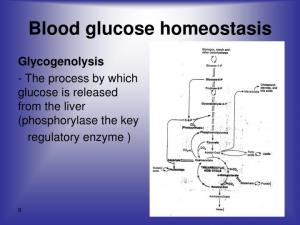
GenBio Addresses Maintaining Glucose Homeostasis
Hormonal and neural regulatory mechanisms that maintain blood glucose levels within a very narrow range
ALISO VIEJO, CA, UNITED STATES, June 16, 2025 /EINPresswire.com/ -- Glucose from a diet is the major energy source for humans and other mammals.
Blood glucose concentrations increase rapidly after food intake and then decline as glucose is
used or stored. Since nutrient intake is irregular but energy requirement is continuous, the
body needs to store glucose, usually as glycogen, mainly in the muscles and liver. Two
peptides produced by the pancreas, insulin and glucagon, control glucose storage by
enhancing glucose uptake and glycogen breakdown, respectively. Persistent high blood
glucose concentrations result from diminished insulin production as in type 1 diabetes or
insulin resistance, a decreased cellular response to insulin as in type 2 diabetes.
Type 2 diabetes is a chronic disease defined by hyperglycemia leading to microvascular
and macrovascular damage. The prevalence of diabetes has been increasing globally since
1990, attributed to living environments and lifestyle leading to poorer nutrition and increased
sedentary behaviour. The International Diabetes Federation estimates that 11.1% of the
world’s adult population aged 20-79 years, around 452 million people, is living with diabetes,
with 4 in 10 of these people unaware that they have the disease. Diabetes is more prevalent
in people aged 65 years and older, including 122 million of this population of 652 million, or
around 19%; further, prediabetes affects 48% of the 26 million older adults in the USA. The
risk to these patients is increased by multiple comorbidities, increased incidence of
hypoglycemia, increased dependence on care and worsening frailty.
Cardiovascular disease remains the leading cause of death in type 2 diabetics, even though
a marked decrease in all-cause mortality of 30–35% in diabetics in the USA and England
has been related to decreases in mortality from cardiovascular disease. Cancer rates have
remained unchanged in diabetes patients, but this is now an increased percentage of deaths
while mortality rates from dementia and liver disease have increased.
Lifestyle modifications, including nutrition and exercise, are the foundation for the management of
type 2 diabetes. Drug treatment of diabetes now includes metformin, which lowers liver
production of glucose, sulphonylureas such as glyburide, which stimulate insulin production,
thiazolidinediones such as pioglitazone which increase glucose uptake into tissues,
prompting insulin secretion and decreasing appetite with glucagon-like peptide-1 receptor
agonists, including semiglutide, combined glucose-dependent insulinotropic polypeptide and
glucagon-like peptide-1 receptor agonists such as tirzepatide and preventing the
reabsorption of glucose in the kidneys by sodium-glucose cotransporter-2 inhibitors such as
dapagliflozin and empagliflozin. Research is continuing, so potential clinical use of
adiponectin and fibroblast growth factor 21 could allow personalized approaches to lower
blood glucose concentrations.
Healthy eating plans are essential for long-term control of diabetes. Preclinical trials with
anthocyanin-containing foods have shown regulation of blood glucose concentrations,
improved gut microbiota, reduced insulin resistance and inflammation, and
changed adipocyte function. Large prospective cohort trials in people in the USA have
shown an inverse relationship between a healthy plant-based diet and the risk of developing
diabetes. Dietary anthocyanin intake was linked to a 15% lower incidence of type 2 diabetes
in 8 cohort studies involving 394,913 participants. In a summary of 18 human trials in type 2
diabetes from the last 5 years, anthocyanins reduced blood glucose and HbA1c
concentrations and improved insulin secretion and resistance, especially in at-risk groups.
Further, diets containing polyphenols such as anthocyanins may reduce the risk of
developing diabetes. The incidence of type 2 diabetes decreased by 5% when the intake of
anthocyanins increased by 7.5 mg/day. As examples, plums such as the Queen Garnet,
Illawarra and Davidson’s varieties may contain 250-500 mg anthocyanins per 100g fruit.
Other important dietary sources of anthocyanins include raspberries, bilberries,
chokeberries, mulberries, and saskatoon berries. These clinical investigations support the
preclinical studies that anthocyanins simultaneously affect many targets associated with type
2 diabetes. These studies reinforce that improving nutritional status in people with diabetes
by adding anthocyanin-containing fruit to current treatment regimens is likely to improve
clinical outcomes. Nutrition, exercise, and treatment with antidiabetic medications remain the
key approaches to the treatment of type 2 diabetes.
Todd D. Sonoga
GenBio Inc.
+1 949-705-8021
email us here
Visit us on social media:
LinkedIn
Facebook
X
GenBio Inc Elevator Pitch
Distribution channels: Banking, Finance & Investment Industry, Companies, Healthcare & Pharmaceuticals Industry, Science, World & Regional
Legal Disclaimer:
EIN Presswire provides this news content "as is" without warranty of any kind. We do not accept any responsibility or liability for the accuracy, content, images, videos, licenses, completeness, legality, or reliability of the information contained in this article. If you have any complaints or copyright issues related to this article, kindly contact the author above.
Submit your press release


